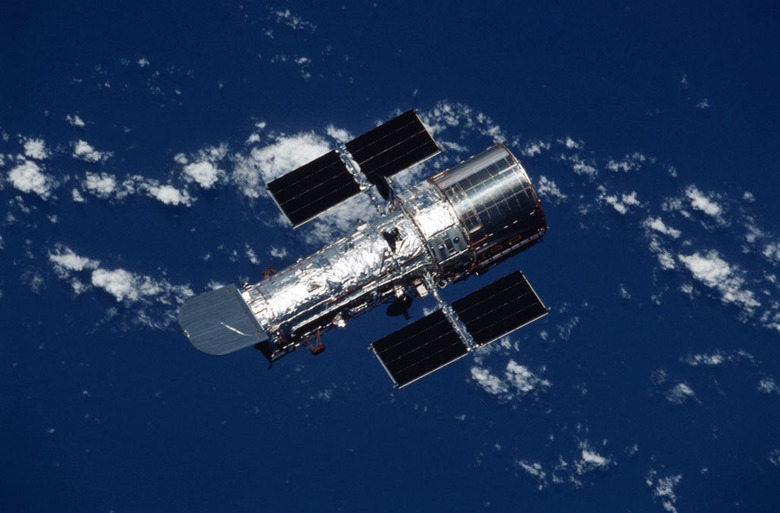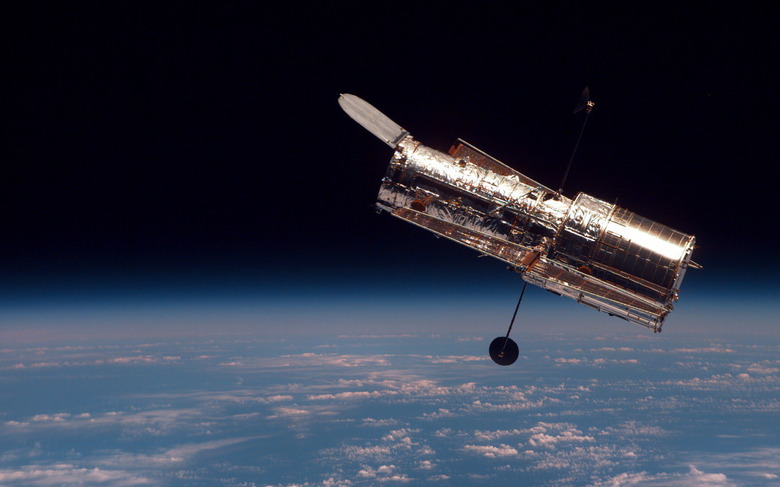NASA's Hubble Repairs Could Get A Whole Lot Riskier
NASA is in no hurry to repair the Hubble Space Telescope, all too aware that as the list of obvious candidates for the venerable instrument's unexpected shutdown shortens, the risks of permanent damage increase. It's been more than three weeks since Hubble abruptly went offline, the space telescope switching into safe mode and interrupting scientific research.
Safe mode is, as the name suggests, a protective state designed to minimize the likelihood of further damage being inadvertently triggered. The spacecraft is safe and in no immediate danger, NASA insists, but efforts to turn the telescope back on have come up short.
Several weeks of investigation have followed, as the potential problems facing the payload computer – responsible for managing Hubble's instruments – are sifted through. It's hardly cutting-edge hardware, either. First designed in the 1970s, the NASA Standard Spacecraft Computer-1 – or NSSC-1 – was the space agency's attempt to standardize parts for its missions.

Hubble's NSSC-1 dates back to the 1980s, and its spec sheet reads like a page out of the gadget history books. Up to 64K of 18-bit wide core memory could be accessed, and a simulator that could run at 1/1,000 of real time. NASA actually installed two of the computers, one as a backup, and four independent memory modules which either NSSC-1 could access.
That's the theory, at least. NASA first tried switching to the backup computer, and looked at using a different memory module. That, however, failed to fix things.
It means the hunt for a solution must spread, and that's where things get more dangerous. According to Paul Hertz, NASA director of astrophysics, with the obvious candidates checked off the team has to look to adjacent systems. That includes some in the spacecraft, too.

"To swap them out and swap in the redundant components on the other side would require commanding of the spacecraft," Hertz told Space, "which is riskier because if you do something wrong, you'll leave the spacecraft in an undesirable condition."
That's not a situation that NASA wants to jump into, and so while the Hubble team might want to have the telescope up and running again, the agency is taking a more measured approach to implementing potential fixes. "We're very deliberately not putting any time pressure on the team," Hertz explains. "I told them that the goal is to safely recover Hubble science operations, not to do it quickly."
Any proposed plan will need to be given approval by NASA's oversight board, which will be weighing the potential for success against the possibility of damaging either the telescope or the spacecraft as a result.
While it's not the first time in Hubble's history that glitches have occurred and repairs have been necessary, previous efforts to fix the space telescope have been a little easier since NASA could physically visit it. With the demise of the Space Shuttle program, however, there's no way to stop by Hubble and swap out components manually. The last physical servicing, which NASA calls Servicing Mission 4 or STS-125, took place in May 2009.
Hertz seems confident that, in time, the NASA team will figure out what's happened to Hubble and repair the telescope. Previous estimates have suggested that it could theoretically last until 2040, assuming no major issues arise in the meantime.
